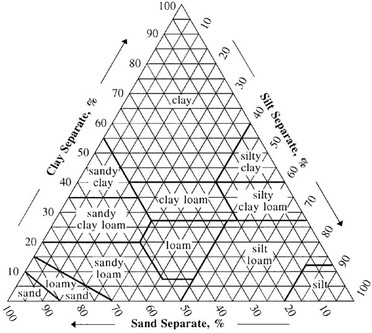|
When building a new sustainable lifestyle you will need to become well versed in topics you have never given a thought about before. One of those topics you will never know everything about even if you study it for years is soil. Soil when you dig into it (pardon the pun) is one of the most fascinating and challenging aspects of building a sustainable, environmentally friendly life. It effects the most basic parts of living, your food, water and shelter needs are directly tied to and influenced by soil. Soil determines what food you can grow and how much of it you can grow. It will be a large factor in determining where groundwater is and how tasty that water is. It also tells you where you should and should not build a house or other structures. So to sum up what could be a long rant, you need to know about soil in general and about the soil where you want to build a new life.  Now their are lots of tools out there to help you with figuring out your soil and what it is good for. One of those tool that I want to talk about today is called a soil texture triangle. A soil texture triangle is basically a chart the enables you to figure out what class of soil you have. By measuring the amount of sands, silts and clay contained in a soil you will get a soil class which can tell you a lot about what you can do with that soil. Basic Method The basic technique to using a texture triangle is to take a small amount of soil and get it a little wet so it is pliable and sticky. Then just roll and squeeze that bit of soil around in your fingers and palm. Paying close attention as you play with the soil you will start to notice a few key characteristics.
Once you get a feel for what's in the soil you can consult a texture chart like the one above to help you figure out what you have. It's fairly easy but it does take experience to really get good at it. Some common mistakes people make are mistaking silt for clay and overestimating the clay in the soil. Another common mistake is overestimating the sand. This happens because sand is so easy to notice in the soil It's also easy to underestimate the clay as a little clay goes along way. Doing a texturing test like this can provide a novice soil scientist with some broad ideas about the soil on their land. For example if you are in a low spot and you find high clay in a texture test that would not be a good place to build a house as water will collect and pool there. If you want a step by step guide to soil texturing, you can check out this flowchart put out by the US Department of Agriculture. One you have mastered using a texture triangle you can use the knowledge you gain to better site houses, gardens and that new backyard pool using soil as your guide. Being able to do this will take you one step farther down the path of true sustainable living.
1 Comment
|
AuthorHello my name is Josh Larson and I am the creator of the Green Living Library. Here on the blog you will find updates to content found in the Green Living Library as well as stories from those living the sustainable life already. Archives
December 2021
Categories
All
|